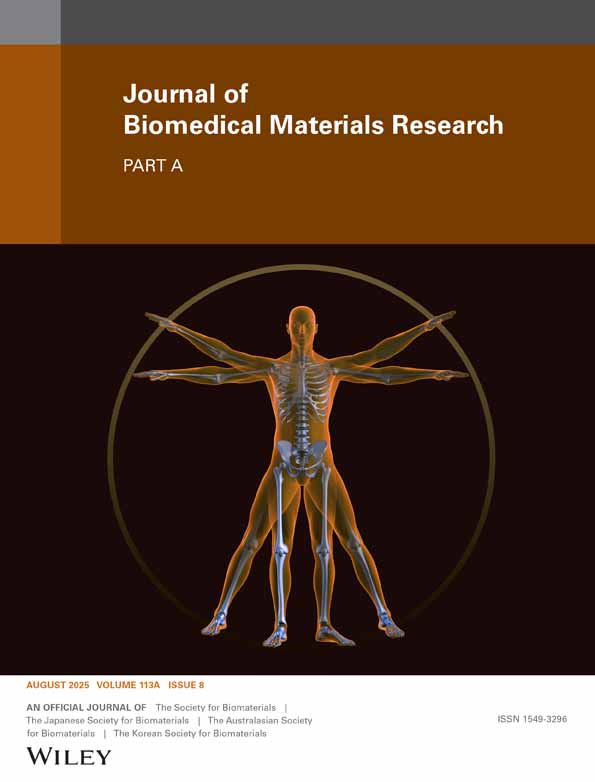Surface modification of interconnected porous scaffolds
Abstract
Surface properties of scaffolds play an important role in cell adhesion and growth. Biodegradable poly(α-hydroxy acids) have been widely used as scaffolding materials for tissue engineering; however, the lack of functional groups is a limitation. In this work, gelatin was successfully immobilized onto the surface of poly(α-hydroxy acids) films and porous scaffolds by a new entrapment process. The surface composition and properties were examined using attenuated total reflection–Fourier transform infrared spectroscopy (ATR-FTIR), X-ray photoelectron spectra (XPS), and contact angle measurements. Control over the amount of entrapped gelatin was achieved by varying the solvent composition, the duration of soaking, the concentration of gelatin in solution, and chemical crosslinking. The amount of entrapped gelatin increased with the ratio of dioxane/water in the solvent mixture used. Chemical crosslinking after physical entrapment considerably increased the amount of retained gelatin on the surface of poly(α-hydroxy acids). Osteoblasts were cultured on these films and scaffolds. The surface modification significantly improved cell attachment and proliferation. Cell numbers on the surface-modified films and scaffolds were significantly higher than those on controls 4 h and 1 day after cell seeding. The osteoblasts showed higher proliferation on surface-modified scaffolds than on the control during 4 weeks of in vitro cultivation. More collagen fibers and other cell secretions were deposited on the surface-modified scaffolds than on the control scaffolds. This novel surface treatment strategy provides a convenient and universal way to modify the surface properties of three-dimensional scaffolds and thus promote cell adhesion and proliferation for tissue engineering. © 2005 Wiley Periodicals, Inc. J Biomed Mater Res, 2005




